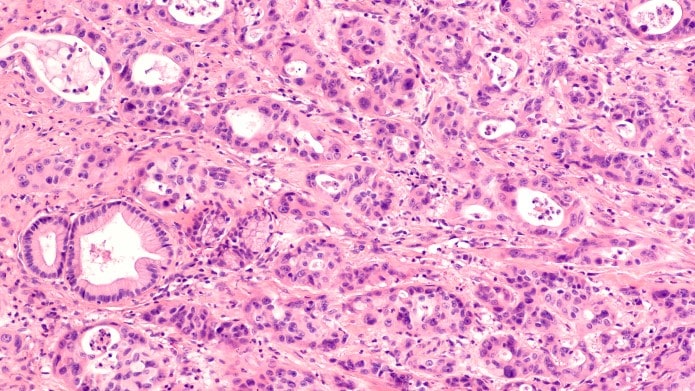Applications
How Do Cancer Vaccines Work?
A cancer vaccine is a form of immunotherapy that helps the immune system to be familiar with and recognize cancer cells. This enables the immune system to recognize and kill these cancer cells.
The development of cancer vaccines to prevent or treat cancer is more difficult compared to other types of vaccines. Cancer vaccines designed to treat and prevent cancer are more difficult to develop and produce compared to other types of vaccines. Bacteria and viruses have distinct characteristics that appear as foreign entities in the immune system. Unlike them, cancer cells are more alike to normal healthy cells which makes it harder for them to be recognized. Additionally, there are instances where the tumors of each cancer patient are unique. This results in a more refined and targeted approach to developing effective cancer vaccines.
There are two types of cancer vaccines.
Preventive Cancer Vaccines
Several cancers were developed from serious virus infections. Cancer vaccines were made to reduce risks. In particular, human papillomavirus (HPV) can cause cervical, head, and neck cancers, whereas hepatitis B virus or HBC can cause liver cancer. Several preventive vaccines have been developed to prevent HPV and HBV infection, and other related cancers.
Breast Cancer

According to the American Society of Clinical Oncology (ASCO), more women are diagnosed with breast cancer than any other cancer. Breast cancer is a form of cancer that starts with an abnormal growth of cells in the breast tissue. These cells usually form a tumor that can be malignant, growing into surrounding tissues and invading other distant areas of the body.
Generally, through a breast biopsy, the tissue is tested for hormone receptors and human epidermal growth factor receptor 2 (HER2). This HER2 gene controls the growth and repair of breast cells by producing HER2 proteins or receptors. But if there is an overexpression of the HER2 gene, or the protein is overexpressed, the cells will grow uncontrollably and lead to HER2-positive breast cancer.
The American Society of Clinical Oncology also declared that roughly 25 percent of all breast cancer cases are HER2-positive. It is likely to be a more aggressive form of breast cancer present in young women.
Treatment:
- Removal of the tumor does not automatically mean that all cancerous cells are eliminated. Likewise, chemotherapy and radiation therapy are not ideal solutions as they tend to damage the healthy cells along with the tumor cells.
- More studies have been put into therapeutic vaccines for curing cancer, one of which is NeuVax. It is a therapeutic vaccine using a single immunostimulatory peptide called E75, derived from the HER2/neu receptor, and administered in combination with granulocyte-macrophage colony-stimulating factor (GM-CSF) as an adjuvant. Results have been encouraging in both the hindrance of recurrence and delaying the progression of cancer.
- Whether these proteins and peptides would be harvested from bacteria or mammalian cells, VacciXcell has the perfect bioreactors to aid you in your bioprocess.
- For Mammalian culture, our patented TideMotion Bioreactors are your best companion.
Cervical Cancer

Human papillomavirus (HPV) was recognized by the International Agency for Research on Cancer as the common cause of cervical cancer. This virus infects the basal keratinocytes through micro-abrasion and is the most common Sexually Transmitted Infection (STI).
HPV-induced Cervical Intraepithelial Neoplasia (CIN) precedes cervical cancer. Vaccines currently available aim to prevent infection for types 16 and 18.
Vaccines that protect from HPV are widely available in the market. However, it only protects against several of the virus strains, not all of them. Because of this, it is still possible for someone to take the prophylactic vaccine and still be diagnosed with cervical cancer.
Cervical cancer also has quite a high mortality rate, with an estimate of more than 30% of patients dying within the first five years from diagnosis. It is one of the most common types of cancer and the 4th most common cancer-related death in women.
Treatments for cervical cancer include surgery, chemotherapy, and radiotherapy. The earlier the cancer is detected and managed, the bigger the chance of survival and prolonging the patient's life. None of these treatment methods, however, are guaranteed to cure the said cancer. In addition, most of these treatments have severe side effects.
Considering this, there are new developments in the field of therapeutic vaccines for cervical cancer which might prove to be more effective with fewer side effects.
Treatment:
One of these therapeutic vaccines is called VGX-3100. It is a form of DNA vaccine that is now in Phase II testing for the treatment of cervical cancer. The way the vaccine works is that it inserts DNA into the patient's cells and produces antibodies and T-cells for the target cells. Such a treatment would not only be much safer, but it would also have the potential of being a long-term solution.
Pancreatic Cancer

Surgery is the first line of treatment for pancreatic cancer. But it depends on one crucial factor: if the tumor and cancer cells can be contained in the excised pancreas. The pancreas cannot be surgically removed if the cancer cells have spread outside of the organ.
As with other forms of cancer, chemotherapy is used as a supplementary management procedure to surgically remove the tumor. Radiotherapy also has the same role. Both treatments, however, can have severe adverse effects on the patients such as nausea and vomiting, hair loss, fatigue, and skin irritations.
Advances in pancreatic cancer treatment have been made in the past few years. A revolutionary therapeutic vaccine, CRS-207, uses bacteria within the vaccine to produce protein mesothelin, an antigen often expressed by solid tumors. This process "programs" the immune system to hunt the tumors.
The pancreas is a glandular organ situated behind the stomach in the abdominal cavity. It is responsible for production of some vital hormones such as insulin. It also aids in digestion by releasing pancreatic juice which contains enzymes that break down carbohydrates, proteins and lipids. The risk of developing pancreatic cancer grows significantly by the age of 40 despite the pancreas being a crucial organ for the digestive and metabolic systems. More than 80% of pancreatic malignancies are pancreatic adenocarcinomas. Back and abdominal pain, skin yellowing, and digestive indications including hunger decrease and weight loss are all common indicators of pancreatic cancer. Because the symptoms are not always clear-cut, most malignancies go undiagnosed until they are well along.
Therapeutic Cancer Vaccines
Thanks to advanced research and thriving scientists, doctors can now identify the target tumor which can help distinguish cancer cells from normal cells. Usually, normal cells become the target as they are abnormally produced in high amounts by cancer cells. An example of this is the prostatic acid phosphatase proteins (PAP), which are overexpressed by prostate cancer cells and the virus-infected cancer cells that produce virus-derived proteins. These are reliable and promising markers that can be used to target cancer cells through vaccines.
The Advantages of Tide Motion Bioreactor in Producing Cancer Vaccines
Esco VacciXcell offers complete manufacturing solutions that utilizes Tide Motion™ technology, enabling developing countries to become self-sufficient in the production, storage, distribution, and administration of cancer vaccines. There are several advantages of using Tide motion bioreactors to produce cancer vaccines, including:
- Higher productivity: Tide motion bioreactors allow for a higher density of cells to be grown in a smaller space, resulting in higher productivity and larger yields of vaccine.
- Improved oxygen and nutrient delivery: The gentle upward and downward motion of tide motion bioreactors enhances oxygen and nutrient delivery to the cells. This improves cell growth and productivity.
- Lower shear stress: The tide motion bioreactor technology provides a gentle motion of the culture medium, which is less damaging to the cells than other types of bioreactors that use more vigorous agitation. This reduces shear stress on the cells and improves cell viability and yield.
- Scalability: Tide motion bioreactors are scalable desican designed to accommodate different volumes of cell culture, ranging from small laboratory-scale to large commercial-scale production. This scalability makes tide motion bioreactors a flexible option for vaccine production, as they can be used to produce vaccines for clinical trials as well as for larger-scale production for commercial distribution.
- Cost-effective: The tide motion bioreactor technology is relatively simple and does not require expensive equipment or specialized training, making it a cost-effective option for vaccine production.
Resources:
- Cancer Research Institute. 2021. Immunotherapy: Cancer vaccine, Preventive, Therapeutic, Personalized. https://www.cancerresearch.org/treatment-types/cancer-vaccines
- American Society of Clinical Oncology. 2014. Chemo- and Targeted Therapy for Patients With HER2-Negative Metastatic Breast Cancer That is Either Endocrine-Pretreated or Hormone Receptor-Negative. https://old-prod.asco.org/practice-patients/guidelines/breast-cancer#/9781
- National Cancer Institute. 2020. Pancreatic Cancer Treatment for Adults. https://www.cancer.gov/types/pancreatic/patient/pancreatic-treatment-pdq





